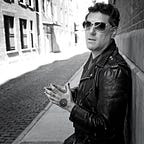Of all the twentieth-century migrants from Theosophy, among the most remarkable is Alice Bailey (1880–1949), an esoteric teacher who began her career in the Theosophical Society and soon branched off to found her own widely influential school, publisher, and spiritual groups.
Bailey’s life and myriad work dramatize the soaring progress and depressing pitfalls of occult expression in the twentieth century.
Born Alice La Trobe-Bateman, Bailey was the product of a wealthy but isolated and deeply unhappy British childhood. Her father, Bailey wrote, was indifferent toward her and her mother died when she was six. She described herself in her unfinished autobiography as “skinny, scared, and startled looking.”
The future seeker attempted suicide three times before age 15. After her third failed attempt, a mysterious turbaned master — whom she later identified as Theosophy’s Koot Hoomi — visited the tormented adolescent to speak of her life mission, giving the outcast a dramatic new sense of dispensation and direction. [1]
